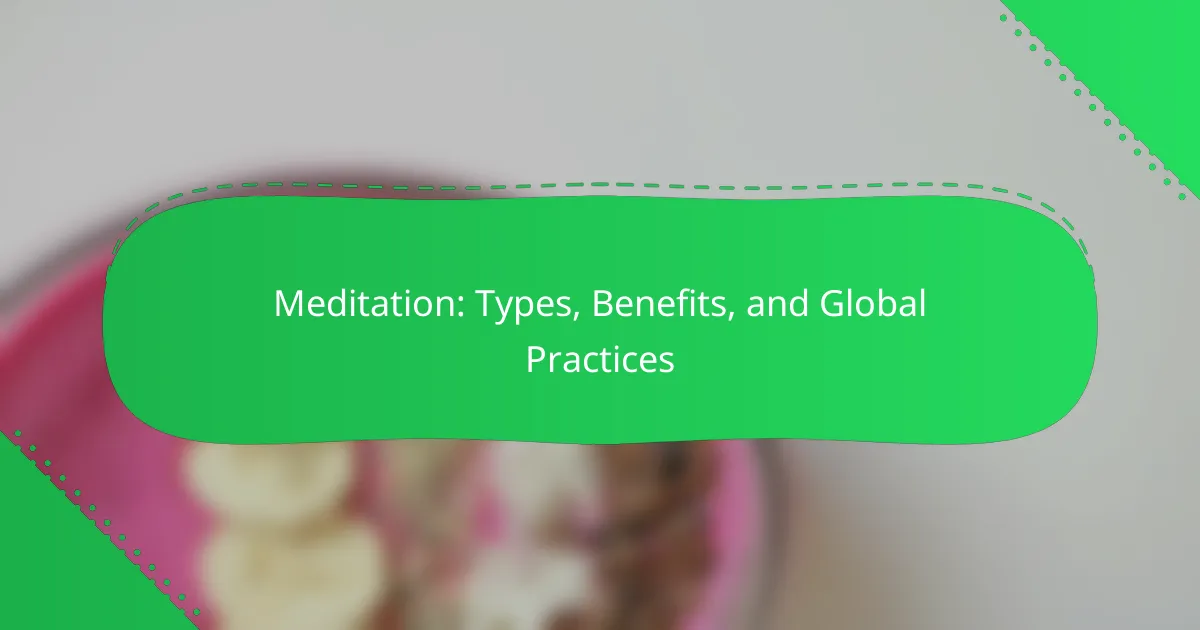Meditation offers numerous benefits, including enhanced mental clarity and reduced stress. This article explores various types of meditation, such as mindfulness and transcendental practices, and their unique advantages. It also examines global practices shaped by cultural influences and addresses common challenges faced by beginners. Finally, effective strategies for optimizing meditation practice will be discussed.
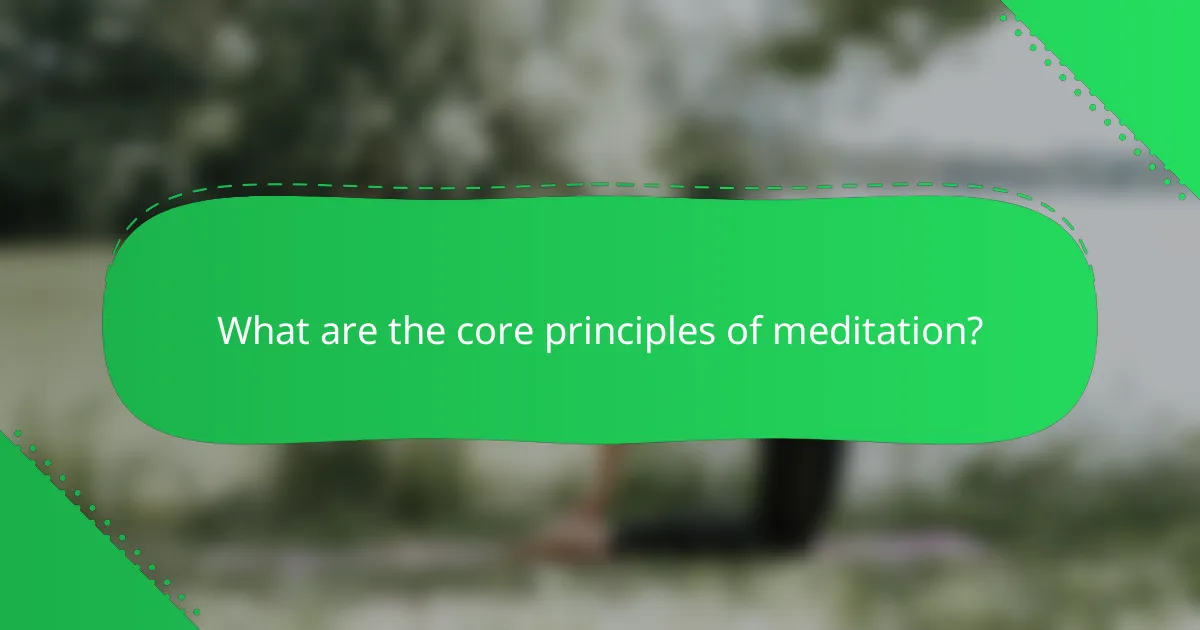
What are the core principles of meditation?
The core principles of meditation include focus, awareness, and relaxation. These elements foster mental clarity and emotional stability. Practitioners often emphasize mindfulness, which enhances present-moment awareness. Additionally, consistency in practice is vital for achieving deeper states of meditation.
How does meditation impact mental health?
Meditation significantly improves mental health by reducing stress, anxiety, and depression. It enhances emotional well-being and promotes a sense of calm. Regular practice can lead to increased focus and better emotional regulation. Studies show that mindfulness meditation can decrease symptoms of anxiety disorders by up to 60%.
What physiological changes occur during meditation?
Meditation induces several physiological changes, including reduced heart rate, lower blood pressure, and altered brain wave patterns. These changes enhance relaxation and improve mental clarity. For example, studies show increased alpha and theta brain waves, which are associated with deep relaxation and creativity. Additionally, meditation can boost immune function and decrease stress hormone levels, promoting overall well-being.
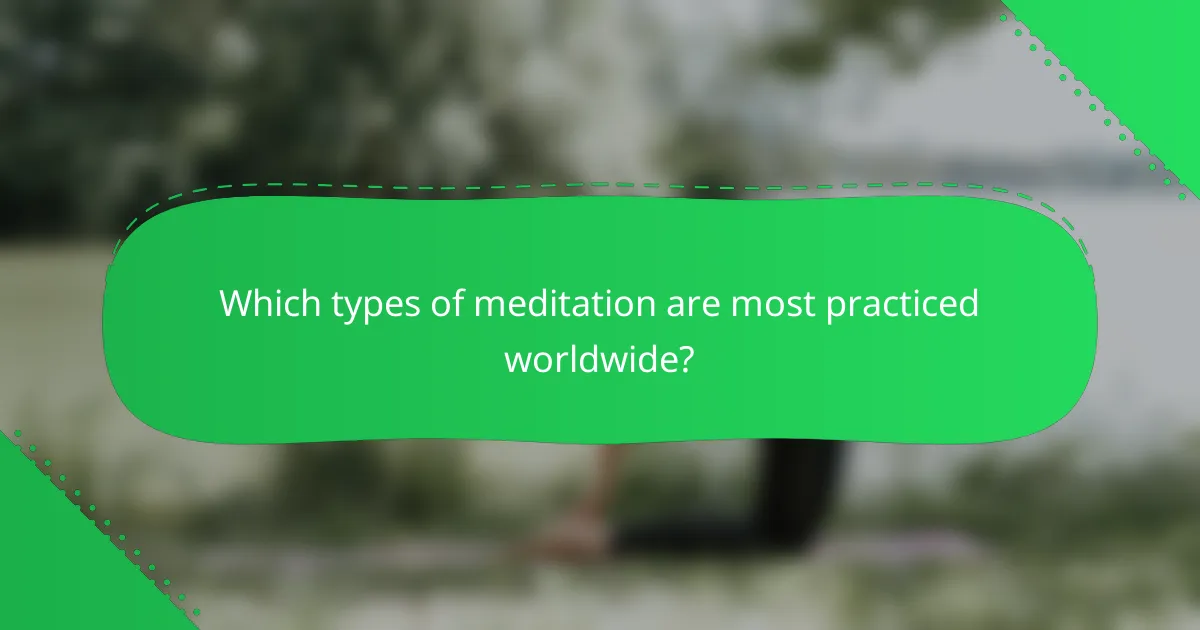
Which types of meditation are most practiced worldwide?
The most practiced types of meditation worldwide include mindfulness, transcendental meditation, Zen meditation, and loving-kindness meditation. Mindfulness meditation emphasizes present-moment awareness, while transcendental meditation focuses on mantra repetition. Zen meditation involves seated practices and breath awareness. Loving-kindness meditation fosters compassion and love toward oneself and others. Each type offers unique benefits, contributing to its global popularity.
How does mindfulness meditation differ from transcendental meditation?
Mindfulness meditation focuses on present-moment awareness, while transcendental meditation emphasizes a specific mantra for deeper relaxation. Mindfulness enhances emotional regulation and reduces stress, whereas transcendental meditation aims for transcendence and inner peace. Both practices improve mental clarity but differ in techniques and experiences.
What role does guided meditation play in modern practices?
Guided meditation plays a significant role in modern practices by enhancing focus and reducing stress. It provides structured sessions led by instructors, making meditation accessible to beginners. This practice promotes mindfulness, leading to improved emotional well-being and mental clarity. Research indicates that guided meditation can increase relaxation responses, helping individuals cope with anxiety and depression. Additionally, it fosters a sense of community through group sessions, enriching the overall meditation experience.
Which forms of meditation are popular in Eastern cultures?
Popular forms of meditation in Eastern cultures include Zen meditation, Vipassana, Transcendental Meditation, and loving-kindness meditation. Each practice emphasizes mindfulness, self-awareness, and inner peace.
Zen meditation, rooted in Zen Buddhism, focuses on sitting in silence and observing thoughts. Vipassana, one of the oldest forms, promotes insight through breath awareness. Transcendental Meditation uses mantras for deep relaxation. Loving-kindness meditation cultivates compassion towards oneself and others.
These practices offer various benefits, such as reduced stress, enhanced focus, and improved emotional well-being.
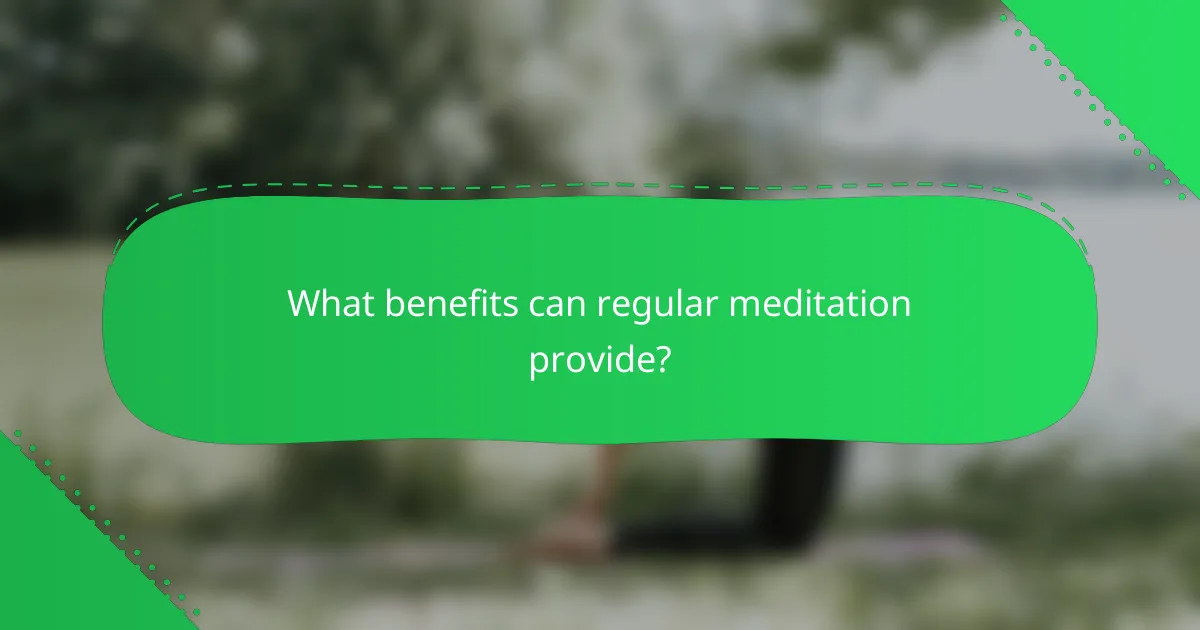
What benefits can regular meditation provide?
Regular meditation enhances mental clarity, reduces stress, improves emotional health, and promotes overall well-being. Research indicates that consistent practice can lead to better focus and a decrease in anxiety levels. Additionally, meditation fosters a sense of community and connectedness, which can enhance social relationships. Regular practitioners may experience improved sleep quality and increased self-awareness, contributing to personal growth.
How does meditation enhance focus and concentration?
Meditation enhances focus and concentration by training the mind to maintain attention on specific tasks. Regular practice leads to improved cognitive performance and mental clarity. Research shows that mindfulness meditation increases grey matter density in brain regions associated with attention control. This structural change supports sustained focus and reduces distractions. Additionally, meditation encourages a state of relaxation, which decreases stress and anxiety, further enhancing one’s ability to concentrate on tasks at hand.
What are the long-term benefits of meditation on stress reduction?
Meditation significantly reduces stress over the long term. Regular practice promotes emotional resilience, decreases anxiety, and enhances overall well-being. Studies indicate that consistent meditation can lower cortisol levels, the hormone associated with stress. Additionally, it fosters a greater sense of mindfulness, allowing individuals to respond to stressors more effectively. As a unique attribute, long-term meditators often report improved focus and clarity, further aiding in stress management.
Which unique benefits are associated with loving-kindness meditation?
Loving-kindness meditation offers unique benefits such as enhanced emotional resilience, increased empathy, and improved social connections. Practitioners often experience reduced anxiety and depression levels, fostering a greater sense of well-being. Additionally, this meditation type can lead to physical health benefits, including lower blood pressure and improved immune function. Research indicates that loving-kindness meditation promotes a positive outlook, encouraging compassion towards oneself and others.
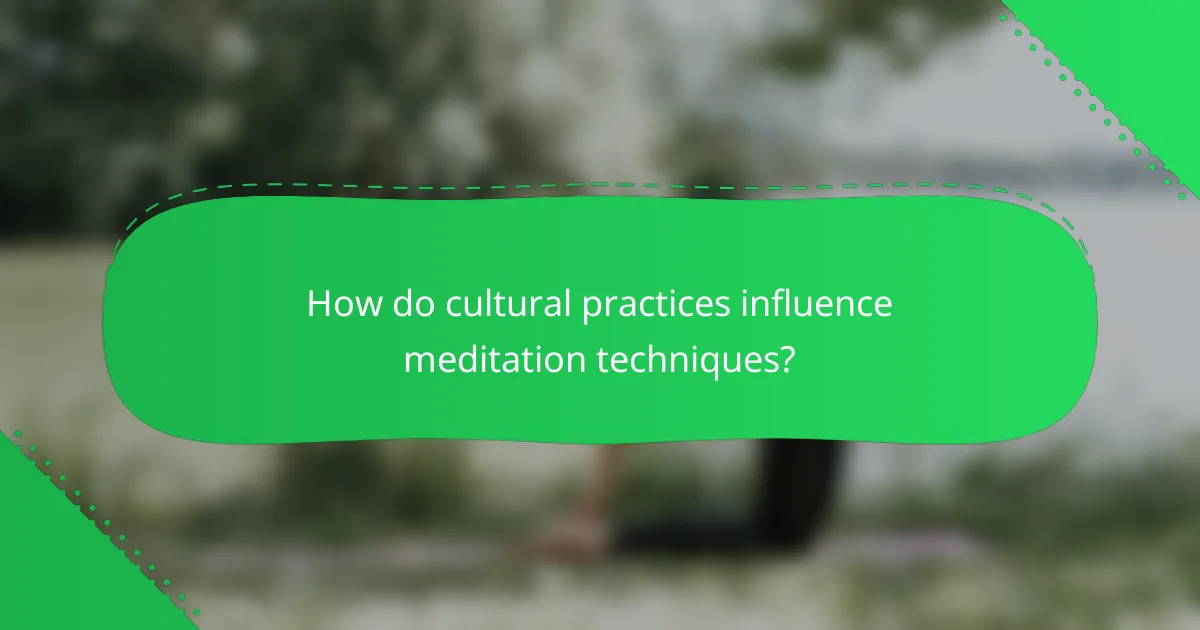
How do cultural practices influence meditation techniques?
Cultural practices significantly shape meditation techniques by integrating local beliefs and traditions. For instance, mindfulness practices in Buddhism emphasize awareness, while yoga in Hindu culture incorporates physical postures and breath control. Regional variations reflect unique attributes of each culture, influencing meditation’s purpose and methods. As a result, practitioners experience diverse benefits tailored to their cultural contexts.
What are the unique attributes of Zen meditation in Japan?
Zen meditation in Japan features unique attributes that distinguish it from other forms of meditation. One significant characteristic is its emphasis on mindfulness and present-moment awareness, fostering a deep connection with the self and surroundings. Another unique aspect is the practice of zazen, or seated meditation, which focuses on posture and breathing techniques to enhance concentration. The integration of Zen principles into daily life also sets it apart, promoting simplicity and intentionality. Additionally, the serene environments, such as Zen gardens and temples, create a supportive atmosphere for practice, enhancing the overall experience.
How is meditation integrated into spiritual practices in various religions?
Meditation is integral to various spiritual practices across many religions, serving as a tool for inner peace and connection to the divine. In Buddhism, meditation cultivates mindfulness and enlightenment. Hinduism incorporates meditation for achieving moksha, or liberation. Christianity often uses contemplative prayer as a meditative practice. In Islam, dhikr involves the remembrance of God through meditation. Each tradition emphasizes unique attributes, such as mindfulness in Buddhism and devotion in Christianity, while sharing the common goal of spiritual growth.
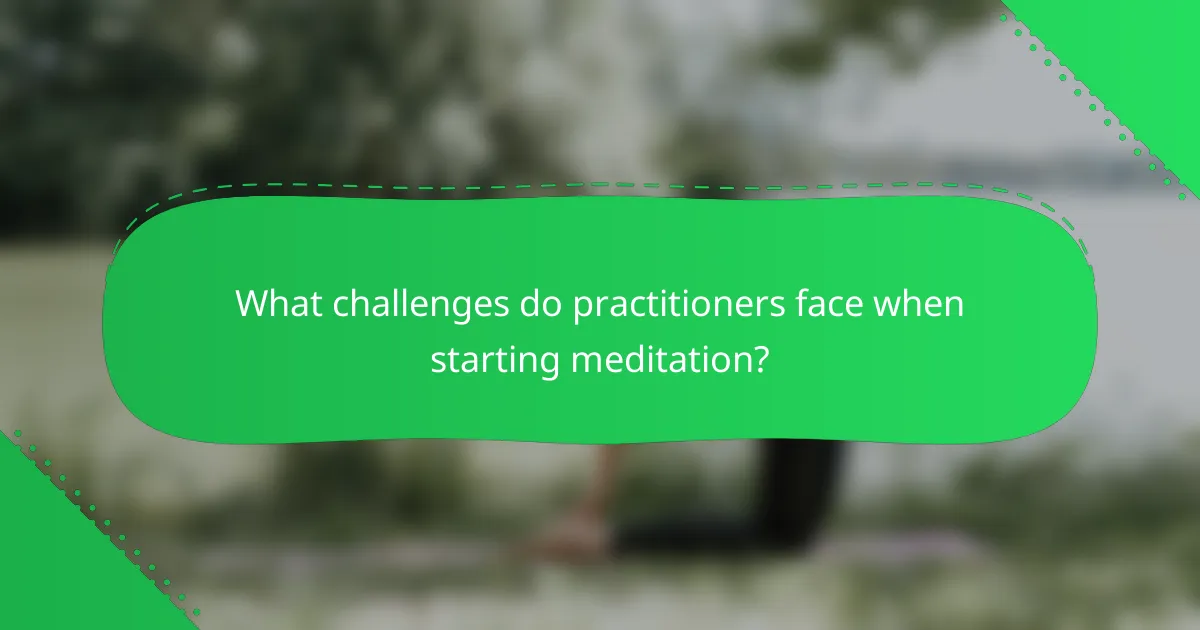
What challenges do practitioners face when starting meditation?
Practitioners face several challenges when starting meditation, including difficulty in maintaining focus, managing expectations, and overcoming physical discomfort. Many beginners struggle with a restless mind, which can hinder their practice. Additionally, unrealistic expectations about immediate benefits can lead to frustration. Physical discomfort, such as back pain or restlessness during sessions, can also deter consistent practice. Establishing a routine and finding the right environment are essential for overcoming these obstacles.
How can beginners overcome common obstacles in meditation?
Beginners can overcome common obstacles in meditation by establishing a routine, focusing on the breath, and using guided sessions. Consistency helps build familiarity and comfort with the practice. Concentrating on breathing anchors the mind, reducing distractions. Guided sessions provide structure and support, making meditation more accessible. Additionally, setting realistic expectations and being patient with oneself fosters a positive experience.
What misconceptions about meditation should be addressed?
Common misconceptions about meditation include the belief that it requires complete silence, that it is only for spiritual individuals, and that it is a quick fix for stress. Many think meditation demands a specific posture or lengthy sessions, but effective practices can be brief and flexible. Additionally, some believe meditation is solely about emptying the mind, while in reality, it often involves focusing on thoughts and cultivating awareness. Addressing these misconceptions can enhance understanding and encourage more people to explore meditation’s benefits.
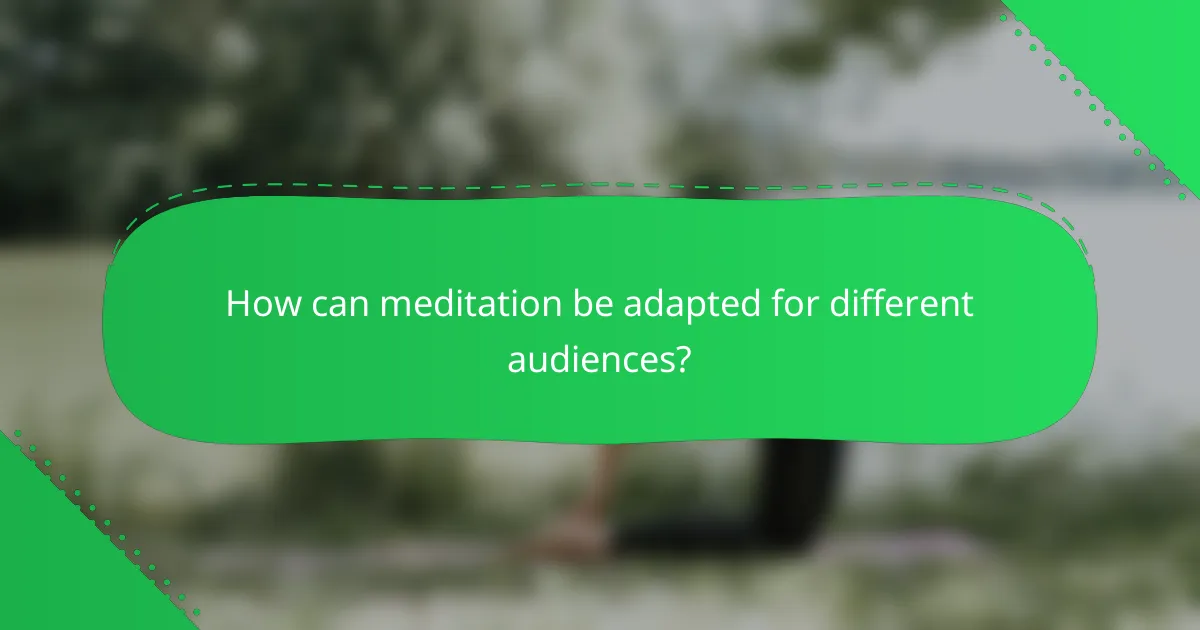
How can meditation be adapted for different audiences?
Meditation can be adapted for different audiences by tailoring techniques and environments to meet specific needs. For children, engaging, playful methods such as guided imagery work best. For seniors, gentle practices focus on mindfulness and breath awareness, promoting relaxation. In corporate settings, short sessions on stress reduction enhance productivity. Athletes benefit from visualization techniques to improve performance. Culturally diverse groups may incorporate traditional practices, fostering connection and relevance. Each adaptation respects the audience’s unique attributes, ensuring accessibility and effectiveness.
Which meditation practices are suitable for children?
Children can benefit from various meditation practices, including mindfulness, guided imagery, and breathing exercises. Mindfulness meditation helps children focus on the present moment, enhancing their awareness and emotional regulation. Guided imagery allows children to visualize calming scenes, promoting relaxation and reducing anxiety. Breathing exercises teach children to control their breath, fostering a sense of calm and focus. These practices are suitable for children as they are engaging and adaptable to different age groups.
How can workplace meditation programs benefit employees?
Workplace meditation programs can significantly enhance employee well-being and productivity. They reduce stress, improve focus, and foster a positive work environment. Research indicates that regular meditation can lead to a 32% increase in productivity and a 50% reduction in employee burnout. Additionally, these programs promote better mental health, leading to lower absenteeism and higher job satisfaction. Implementing meditation practices can create a more resilient workforce, ultimately benefiting the organization.
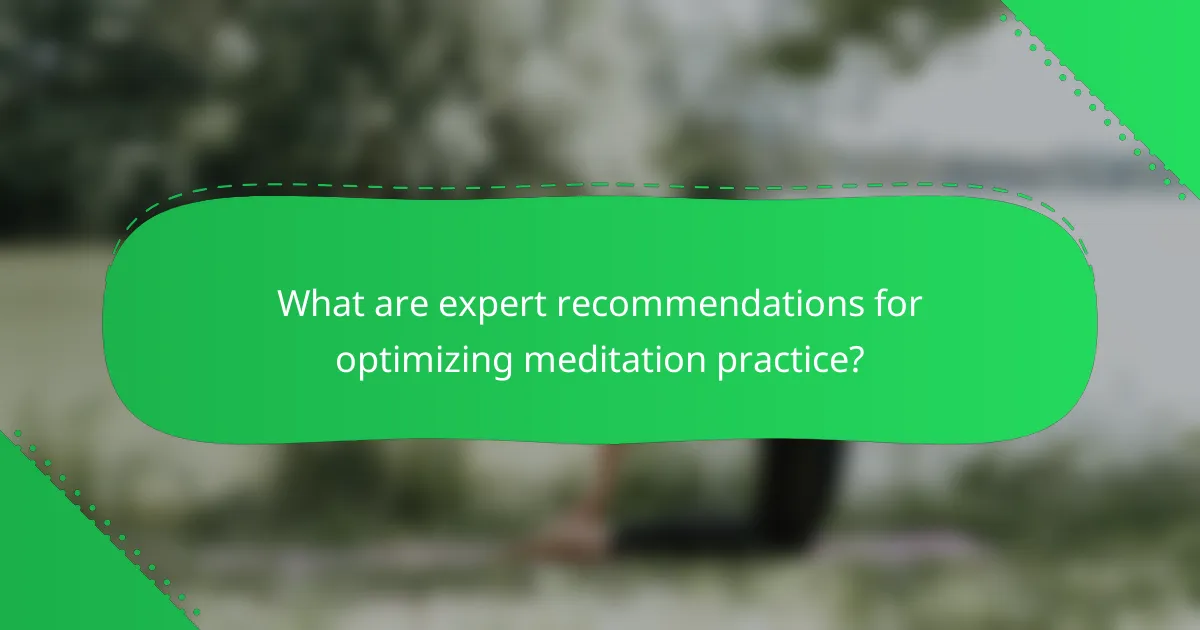
What are expert recommendations for optimizing meditation practice?
To optimize meditation practice, experts recommend establishing a consistent schedule, creating a dedicated space, and exploring different techniques. Regular practice enhances focus and reduces stress. For example, daily sessions of 10 to 20 minutes can yield significant benefits. Experimenting with mindfulness, guided, or transcendental meditation can help find the best fit. Additionally, incorporating breathing exercises and setting intentions before sessions can deepen the experience.
What common mistakes should be avoided in meditation?
Common mistakes to avoid in meditation include setting unrealistic expectations, trying too hard to clear the mind, and neglecting posture. Many beginners expect immediate results, which can lead to frustration. Additionally, forcing concentration can create tension instead of relaxation. Proper posture is essential for comfort and focus.
How can one create an effective meditation environment?
To create an effective meditation environment, prioritize tranquility, comfort, and minimal distractions. Choose a quiet space with soft lighting and comfortable seating to enhance focus. Incorporate calming elements like plants, soothing scents, or gentle sounds to promote relaxation. Consider personalizing the space with items that inspire peace, such as candles or meaningful artwork.
What tips can help deepen meditation experiences?
To deepen meditation experiences, focus on consistent practice, create a dedicated space, and incorporate mindfulness techniques. Engaging in breath awareness enhances focus. Experiment with different meditation styles to find what resonates. Use guided meditations to explore new depths.
